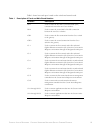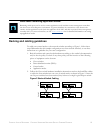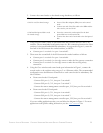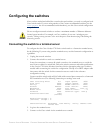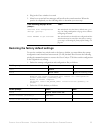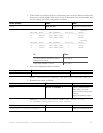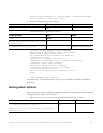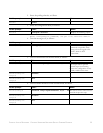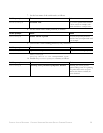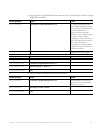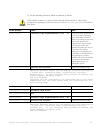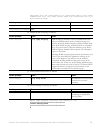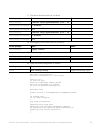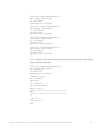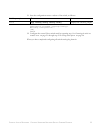
CASSATT ACTIVE RESPONSE CONTROL NODE AND NETWORK SWITCH CABLING EXAMPLE 28
13. Set the remaining interfaces, which are identical, as follows.
%Warning: portfast should only be enabled on ports connected to
a single host. Connecting hubs, concentrators, switches,
bridges, etc... to this interface when portfast is enabled, can
cause temporary bridging loops.
Use with CAUTION
%Portfast will be configured in 22 interfaces due to the range
command but will only have effect when the interfaces are in a
non-trunking mode.
%Warning: portfast should only be enabled on ports connected to
a single host. Connecting hubs, concentrators, switches,
bridges, etc... to this interface when portfast is enabled, can
cause temporary bridging loops.
Use with CAUTION
If the switches connect to a gateway device through another switch or a device that
participates in spanning tree protocol, do not set
spanning tree portfast
for the link to
that device.
At this prompt... Enter... Notes
sw01(config)# interface range GigabitEthernet 1/0/3 – 24
Setting the portfast option means
that the port starts forwarding
packets immediately instead of
waiting for spanning tree protocol
packets. This allows for less
dropped packets when a switch
first is brought online. This
explanation assumes that none of
the interfaces are running
spanning tree. All spanning tree-
to-spanning tree switches must not
have spanning-tree portfast
enabled. If they do have it enabled,
the interface is automatically
disabled upon receipt of a
spanning tree packet.
sw01(config-if-range)# spanning-tree portfast
Displays the following output:
At this prompt... Enter... Notes
sw01(config-if-range)# switchport mode access
sw01(config-if-range)# exit
sw01(config)# interface range GigabitEthernet 2/0/2 – 24
sw01(config-if-range)# spanning-tree portfast
Displays the following output:



